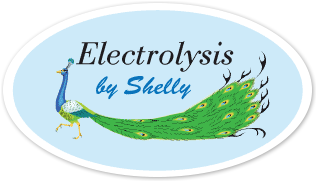Understanding Hyperpigmentation

Understanding Hyperpigmentation: Five Types of Skin Discolouration and Their Causes
Understanding Hyperpigmentation (brown spots) types and causes is important. Brown spots are one of my clients’ main beauty concerns. They are considered unsightly and tend to make the skin look older. Nowadays, more than 50% of women around the world show skin discolouration.
1. Lentigo
Lentigo, or liver spots, are discolouration of the skin (brown spots) that are mainly caused by prolonged and repeated exposure to sunlight. Yellow, brown and later, black senile lentigo appears on older adults’ skin, mainly on the back and shoulders, hands and forearms, neckline and face.
2. Freckles
Freckles are genetically transmitted hyperpigmented dots. They are usually located on the nose and the cheeks, but they also appear on limbs and back for people with very light skin. They are smooth and symmetrical and their colour ranges from yellow to red to dark brown.
Freckles seemingly increase in number during the summer, due to sun exposure. Freckles appear during childhood and are permanent, but the colour intensity can be considerably reduced with the help of lightening agents.
3. Melasma
This type of hyperpigmentation is associated with hormonal changes experienced during pregnancy or menopause. Symmetrical “blotches” appear on the cheeks and the forehead.
In theory, melasma is a very benign condition. It can also be triggered by oral contraceptives. Half of all pregnant women experience melasma, particularly those with dark skin. These discolourations will disappear on their own a few months after childbirth, but will become permanent if the person sunbathes excessively during pregnancy.
4. Berloque Dermatitis
This type of spot is often attributed to an allergic reaction following the application of a perfume containing oil of bergamot, a small citrus fruit whose oil is rich in bergapten, a photosensitizer. It starts as erythema (swelling) on the area where the perfume was sprayed, followed by deep pigmentation. The lesions usually appear as teardrop-shaped pigmented macules along the sides of the neck, much like a necklace or “berloque.” (French for trinket or charm.)
5. Cicatricial Hyperpigmentation
A localized and usually accidental hyperpigmentation due to melanocytic hyperactivity is caused by burns or scars.
Recent studies on skin discolouration and hyperpigmentation allow for a better understanding of the skin’s pigmentation process. Since hyperpigmentation makes the skin visually older, several skin lightening cosmetic products have become available to esthetic professionals in order to help reduce the appearance of brown spots and act as a means of anti-aging at the same time.
What We Would Recommend
Laser Treatment for hyperpigmentation (brown spots) is an extremely beneficial way of eliminating discolouration of the skin in one to two treatments on average.
Hyperpigmentation Laser Treatments at our office begin once again September 22, 2020. Get in on 20% off savings for hyperpigmentation (brown spot) laser treatment(s) from September 22nd to October 2nd, 2020.
Call ahead or email to book your appointment, as limited spaces are available.
